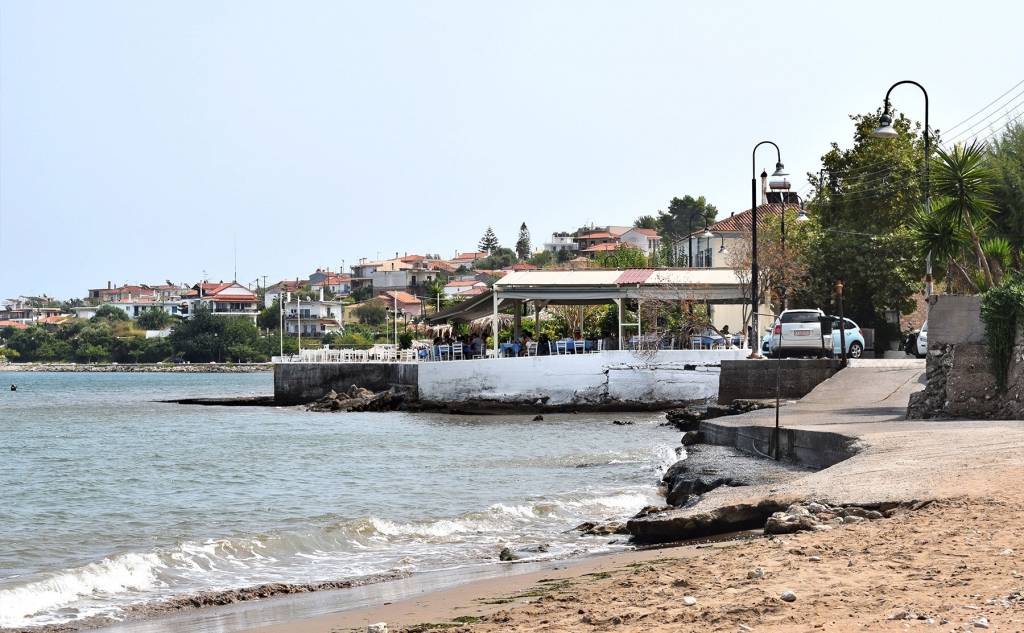






Picturesque Petalidi is 13 kilometres from Messina and 28 kilometres from Kalamata. It is a seaside town (with about 1000 permanent residents) which combines mountain, sea and plain views. Petalidi likely owes its name to the horseshoe shape of its coast.
Near Petalidi, in the area of Nichoria, a significant Prehistoric settlement has been excavated, which flourished particularly during the Mycenaean era and was abandoned in the middle of the 8th century BC. Today, many findings are kept in the Archaeological Museum of Messenia in Kalamata. Petalidi has been identified as the site of ancient Aipeia (one of the seven Messenian cities granted by Agamemnon as a dowry to his daughter Iphigenia if Achilleas would marry her). Also, in Petalidi, the archaeological excavation brought a temple of the Roman era and baths of the same period, carved stones, marble columns, various inscriptions, and parts of statues to light.
In 1828, Petalidis bay became the landing place for the troops of the French general Maison, who contributed to the clearing of the Peloponnese from the Egyptian warriors of Ibrahim, thus helping the Greeks. Petalidi is also known as the "colony of the Mani people" since, after the Revolution of 1821, many residents of Mani settled there permanently.
Today's Petalidi was founded by Maniatis Nikolaos Mavromichalis, whom the Bavarians gave the area as a minimum payment for his family’s unique help in the Greek Struggle for Independence. The proper construction of the town began in 1835, based on the designs of the Bavarian engineers Coleman and Strauss. According to the newspaper "Anagennithisa Hellas" (published in Nafplion), in 1836, more than 200 families had settled in Petalidi. In fact, this fact aroused the interest of Othon and Amalia, who visited the town in 1838.
The small beach of the same name, where visitors can enjoy swimming in the clear waters with the pebbly coast, 300 metres long, is just in front of the small port of Petalidi. At a higher altitude than Petalidi (near the settlement of Agia Sotira) is the Petalidi Castle, also known as Pera Castle or Leone Castle. In fact, Kontoglou also mentions it as the Castle of Panyperi (which is a nearby village). It is a castle with an almost rectangular shape, without battlements, where the ruins of buildings, a vaulted tank and possibly the ruins of a small temple can be seen inside.
In Petalidi, visitors can see the Outdoor Archaeological Collection (where findings from ancient Koroni are housed), as well as the Liar's Fountain, which is located at the southern end of the homonymous beach and is considered a reference point. The fountain’s water descends from Mount Taygetos and ends up crystal clear at the two outlets of the tap.
The town square is dominated by the two Byzantine churches of Agios Nikolaos and Zoodochos Pigi (Church of Panagia Petalidiotissa). The Virgin Mary of Petalidi has been the Ephorus and Patron of Messina for centuries. At the same time, the inhabitants honour the miraculous icon of the Mother of God of Zoodochos Pigi on Friday of the Week after Easter.